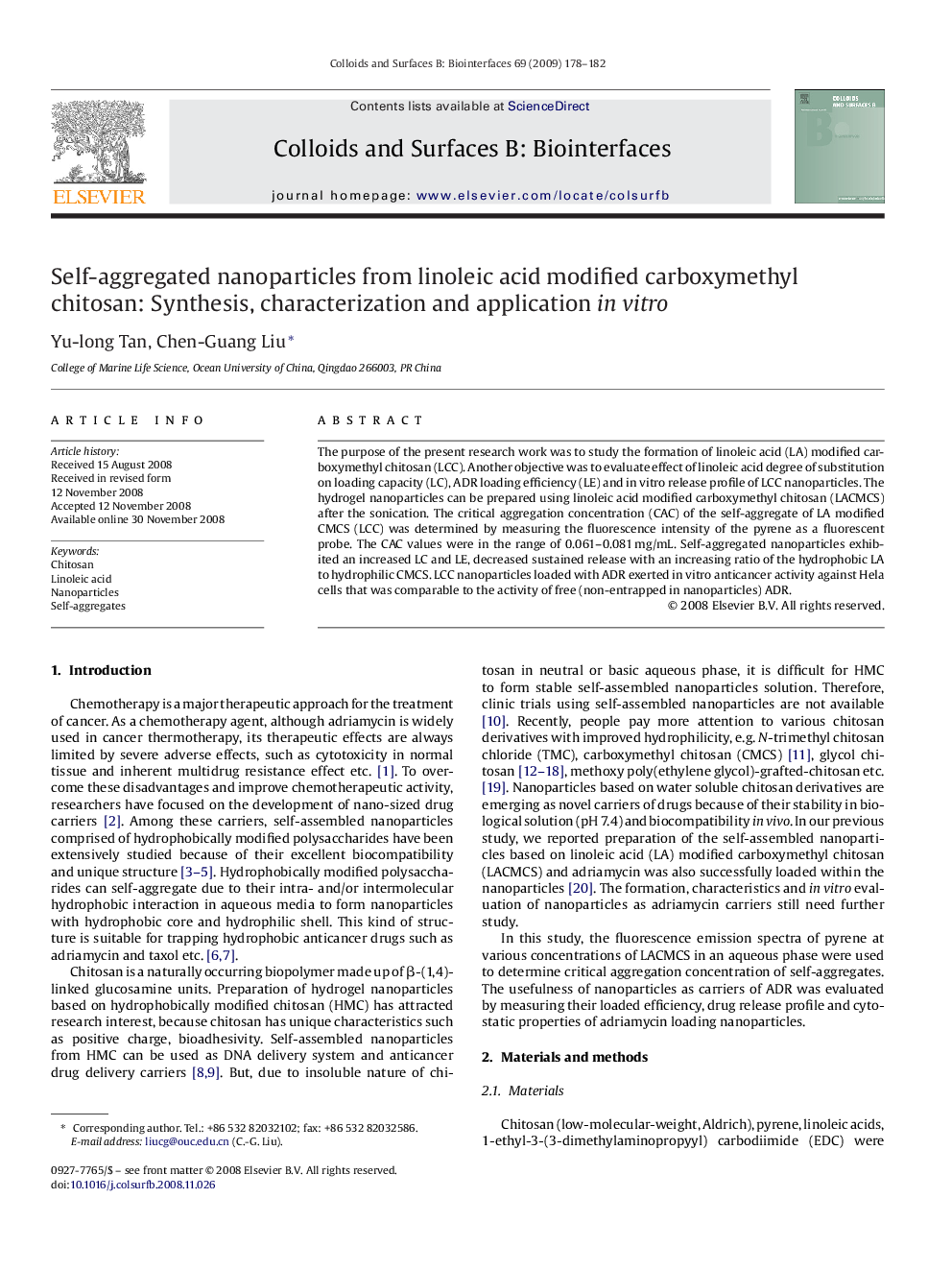| Article ID | Journal | Published Year | Pages | File Type |
|---|---|---|---|---|
| 602096 | Colloids and Surfaces B: Biointerfaces | 2009 | 5 Pages |
The purpose of the present research work was to study the formation of linoleic acid (LA) modified carboxymethyl chitosan (LCC). Another objective was to evaluate effect of linoleic acid degree of substitution on loading capacity (LC), ADR loading efficiency (LE) and in vitro release profile of LCC nanoparticles. The hydrogel nanoparticles can be prepared using linoleic acid modified carboxymethyl chitosan (LACMCS) after the sonication. The critical aggregation concentration (CAC) of the self-aggregate of LA modified CMCS (LCC) was determined by measuring the fluorescence intensity of the pyrene as a fluorescent probe. The CAC values were in the range of 0.061–0.081 mg/mL. Self-aggregated nanoparticles exhibited an increased LC and LE, decreased sustained release with an increasing ratio of the hydrophobic LA to hydrophilic CMCS. LCC nanoparticles loaded with ADR exerted in vitro anticancer activity against Hela cells that was comparable to the activity of free (non-entrapped in nanoparticles) ADR.
